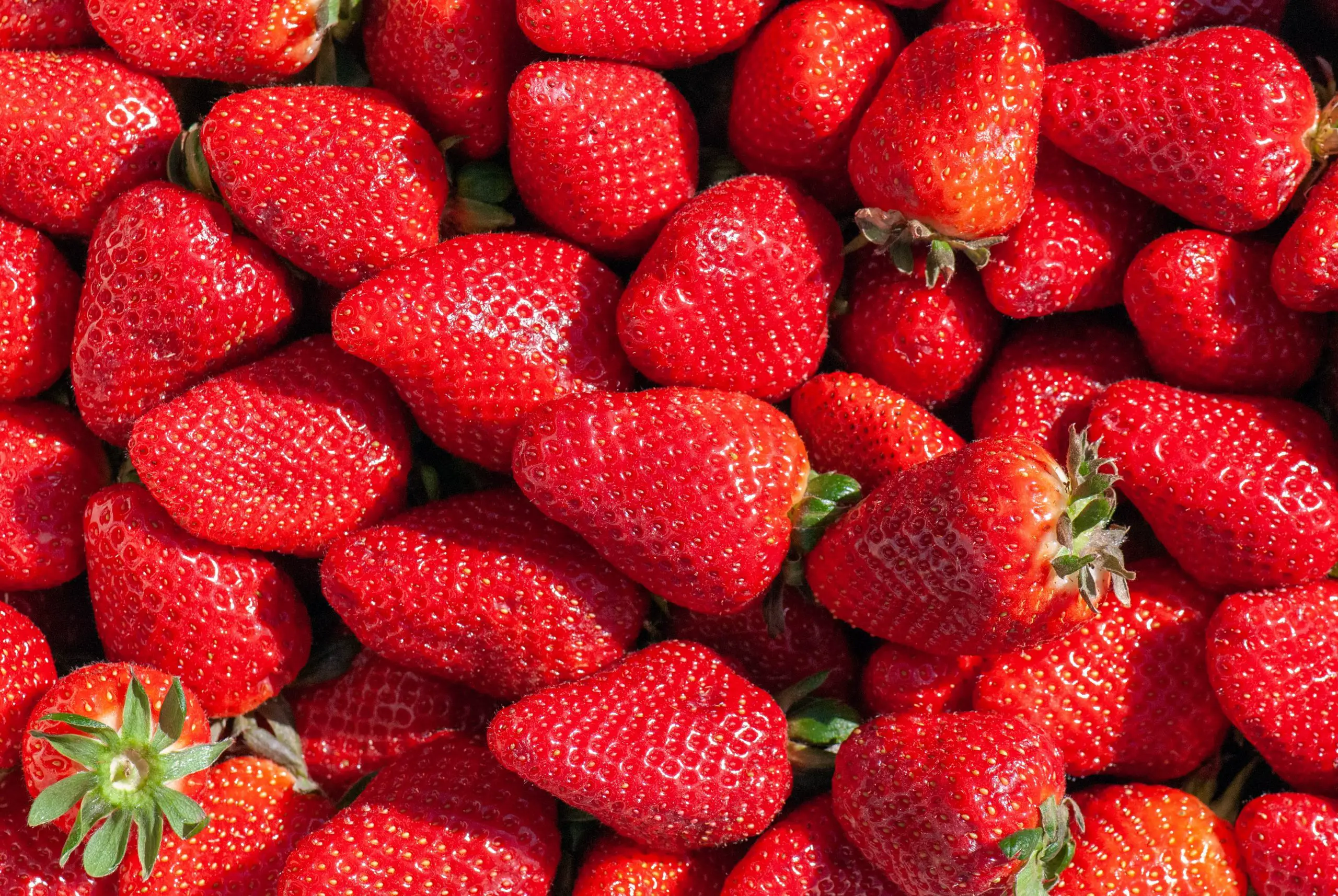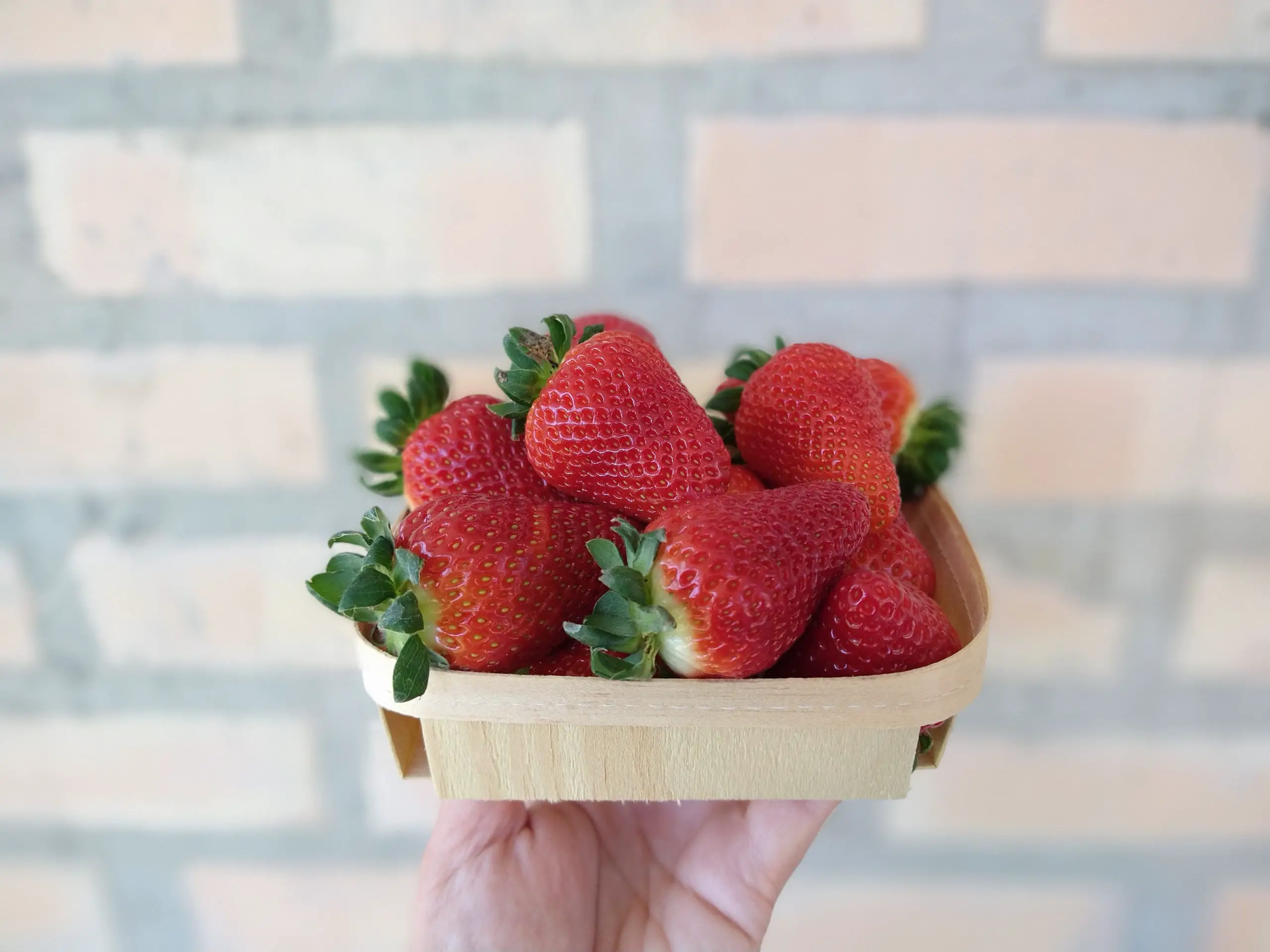One of the best ways to store strawberries is in the refrigerator. But there are other ways to store them, such as Tupperware and compostable paper sheets. Just remember to avoid introducing moisture. Some strawberries don’t tolerate water well, so be careful not to add it. And if you can, keep them in a cool place to avoid evaporation and spoilage.

How to Store Strawberries?
The refrigerator will be your best option if you want to extend its shelf life for use in baked goods and other recipes. Here are some suggestions for keeping strawberries fresh in your refrigerator all season. Strawberries will remain firm and fresh when stored properly for about a week.
Strawberries must be kept very cool and dry. To do this, line a shallow glass bowl, baking sheet, or plate with a few paper towels or a fresh kitchen towel. With a single layer of unwashed strawberries on top, cover with a lid or plastic wrap and store in the refrigerator until needed, ideally within seven days.
Remove and discard any strawberry that appears to be going bad or starting to mold right away. Avoid letting one bad berry ruin the entire batch! Keep an eye out for any signs of strawberry spoilage because mold spreads quickly and easily.
Here are some crucial pointers for keeping strawberries in the fridge:
1. Don’t wash your strawberries beforehand
When dry and cold, strawberries will remain at their freshest; any additional moisture will cause the strawberries to soften and promote mold growth. Therefore, wash your berries as you plan to eat or prepare them rather than immediately after you return from the store.
2. Keep your strawberry stems on.
Keep your fresh strawberries’ tiny, frilly green stems on them when storing them in the refrigerator. Your berries’ interiors will be protected, and keeping the stems on will increase their shelf life.
3. Maintain a single layer of them.
The best way to keep your strawberries intact is to avoid covering them with other berries.
Tupperware
There are several methods for storing strawberries. You can keep them in their original packaging or put them in a plastic or cardboard container. According to The Kitchen, you should sort your strawberries before storing them. This way, you will be sure to keep the ripest ones on top and the moldy ones on the bottom. This will ensure that the strawberries are as fresh as possible, even after a week.
Another method is placing them in a water and white vinegar solution. While the exact proportion of the two can vary, the safest ratio is about a 1/4 cup of vinegar to one and a half cups of water. This solution will kill any bacteria that might be on the berries and will also help keep them fresh. After this step, you can place the strawberries back into the container and store them in the refrigerator.
Compostable Paper Sheets
Strawberries can be stored in various ways. One popular way is to use compostable paper sheets. These sheets are infused with organic spices that counteract spoilage. They can keep strawberries fresh for a longer period. In addition, these sheets are completely compostable. For this reason, you should consider using them for storing your strawberries.
Strawberries are prone to mold and bacteria when stored in a closed space. To avoid this, keep them in a flat container with a loose-fitting lid. Strawberries are susceptible to bacteria and mold because of the moisture they absorb. FreshPaper will help preserve the berries longer by inhibiting bacterial growth and encouraging airflow. Compostable paper sheets can also protect strawberries because they are made from biodegradable paper.
Drying
Drying strawberries can be an effective way to preserve them. This process is fast and easy and can save you time in the kitchen. Before you begin drying, make sure to wash and sanitize your counters and equipment. Next, wash your strawberries thoroughly. It would be best if you also dried them gently. Be careful to avoid any moldy or bruised strawberries. You can hull them using a paring knife or glass straw, but this step is optional. Also, cut your strawberries into equal pieces about 1/4-inch to 3/8-inch thick. This helps to ensure that the drying time is consistent.
Drying strawberries in the oven is faster and simpler than sun drying. This method is also effective if you don’t have the time to wait for a few days. Depending on the size and thickness of the slices, you can have dried strawberries in as little as three to four hours. To ensure the best results, flip your strawberries every couple of hours to ensure even drying.
Does a Vinegar Bath Keep Strawberries Fresh?
According to some home cooks, strawberries hold up better after being first soaked in a solution made of one cup of white vinegar and two cups of water. The vinegar scent and residue are then removed from the berries by rinsing them in a colander. While this approach does a fantastic job of preventing mold, according to some cooks, it also wilts the berries and dulls their flavor. Test this approach during the strawberry season to determine whether you like it better.
Do Strawberries Last Longer in the Fridge or on the Counter?
In the fridge, strawberries keep better. They will quickly go bad if you leave them out on the counter. But remember that even if you follow the best practices for storage, strawberries are not a fruit or vegetable that can be kept for a long time, like potatoes or onions.
According to Linda J. Harris and Elizabeth Mitcham, “Strawberries can only be stored for up to seven days under ideal conditions, and that shelf life also depends on how ripe the fruit was when the fruit was purchased or picked.”
Will Strawberries Ripen at Room Temperature?
Berry ripening does not occur at room temperature. Strawberries do not continue to ripen after being harvested. Thus it is crucial to inspect them in-store before buying them and to ensure that your homegrown strawberries are fully ripe before harvesting.
The kitchen garden’s strawberries should be brightly colored and completely crimson. How about grocery store fruits? Avoid mushy strawberries, damaged, leaking juice, shriveled or moldy, and have dry, brown caps, advise Peggy Van Laanen and Amanda Scott. Additionally, avoid strawberries that have large white or green areas on them.
Strawberries should always be kept in the refrigerator for storage. Check them frequently, and throw away any that start to mold or grow soft. Within a few days, eat them.
Can you Eat Strawberry Tops?
Yes, you can eat strawberry tops. It’s okay to leave the tops on berries if you know you’ll only use them in smoothies or another dish that will be thoroughly blended.
In addition to being edible, strawberry leaves are a good source of vitamins, minerals, and ellagic acid, well-known cancer preventative.
Put strawberries on a baking sheet covered with parchment paper or reusable parchment paper. Usually, I vacuum seal them the following day after loading them onto trays and freezing them.
To achieve a good seal when vacuum sealing, ensure the bag’s opening is completely dry.
Avoid attempting to vacuum-seal frozen berries. The berries will compress as the vacuum sealer removes air from the bag, squeezing juice from your berries into the sealer. Your bags might not seal, and you’ll make a huge mess.
If they get lost in the depths of the freezer and are discovered years from now, mark the contents and date with a Sharpie marker somewhere on the bag.
How to Use Frozen Strawberries?
Its puree is used in almost all desserts that use strawberries. In some cases, such as strawberry shakes, we can use the frozen cubes directly; however, in all other cases, we must thaw them to return them to their puree state.
- Making a strawberry shake is easy with the help of these strawberry cubes. Add some strawberry cubes and milk to a blender and blitz without thawing. Ice cubes can be avoided as well—no need to thaw.
- Strawberry Puree: Strawberry puree is used to make the strawberry coulis. So, thaw the strawberry cubes before continuing with the recipe.
- Again, the puree is required for the strawberry mojito. Defrost the frozen cubes or add frozen whole strawberries to the blender.
- Strawberry yogurt: A puree is required; as previously stated, use either way.
- Strawberry panna cotta: You’ll need a puree.
- The puree is required for strawberry muffins. Thawed strawberries should be chopped into tiny pieces for serving.
Reference: Consumer Perceptions Of Quality: Apricots, Cantaloupes, Peaches, Pears, Strawberries, And Tomatoes
How to Defrost Frozen Strawberries?
When it’s time to defrost those frozen berries, there are various methods you can use.
First and foremost, use your microwave’s convenient defrost mode! The frozen strawberries should be placed in a microwave-safe bowl. Let the strawberries defrost for about 30 seconds, then check on them. The drawback of this strategy? Depending on the use you have in mind for the strawberries, you run the risk of cooking or, at the very least, heating some of the fruit. Additionally, you should only employ this technique if you intend to cook with the strawberries or use them in a recipe that calls for immediate consumption.
The strawberries can be placed in a resealable plastic bag (if they aren’t already in one from the freezer), and then the entire bag can be placed in a big bowl. Put the strawberry bag in the bowl after filling it with cold water. To keep the bag from rising to the water’s surface, you might need to place something heavy on it, like a full water bottle. Every 15-20 minutes until the berries are defrosted, gently swish the bag around and change the water with fresh, cold water.
The refrigerator approach, which takes the longest but requires the least effort, is your last option for defrosting frozen strawberries. The berries can be moved from the freezer to the refrigerator for eight hours or the night before you intend to use them. As they defrost, frozen strawberries will release juices, so make sure they are in a leak-proof bag or container!
Conclusion
Strawberries can be stored in a variety of ways. The obvious conclusion is that most storage hacks and techniques aren’t worthwhile investing your time in. Usually, as soon as you get home from shopping, you should put the strawberries in the refrigerator. A quick soak in water and vinegar might produce slightly better results if you’re not in a rush.
Do you have a ton of strawberries in a stack? It would be best to freeze them. They won’t work well for fruit salads or cocktail garnishes, but they’ll be fine for most other recipes, such as those for baked goods and desserts.
